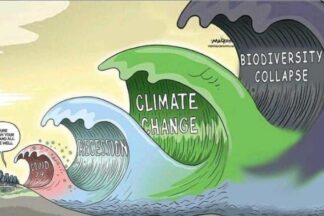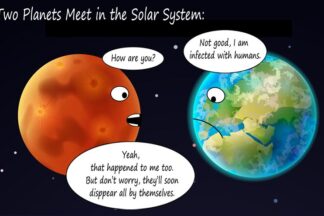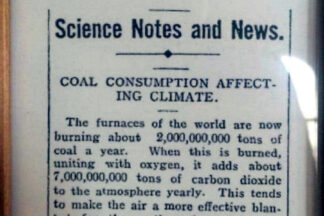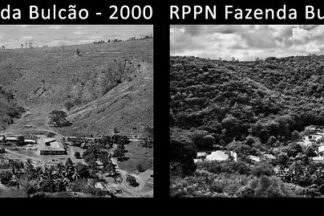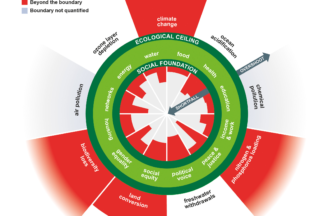After some results at the COP in Vancouver, as well as efforts by the TNFD (Task Force for nature-based financial disclosure) – we finally (!) got the first ever Science -Based Targets for Nature (SBTN).
It is a first release, however. So the question obviously is, how do these targets address the 5 key drivers of biodiversity erosion? Are the SBTNs worth their salt?
In the last post I wrote about one of the most historic inter-governmental landmark decisions: At the ‘Biodiversity’ COP (COP15) 200 countries had agreed on 4 Goals and 23 Targets.
It goes without saying though that the interesting piece is the enforcement and implementation mechanisms of the mentioned agreement.
Hence, the focus of this article is: How exactly – if at all – will the goals and progress measures reached in December 2022 be enforced and tracked?
In time for Christmas, one of the most historic inter-governmental landmark decisions hit the headlines: The 'Biodiversity' COP (COP15) had actually achieved 'something'. 200 countries had agreed on 4 Goals and 23 Targets. Some of those are a bit more concrete than others, the headline goes roughly like this: “By 2030: Protect 30% of Earth’s lands, oceans, coastal areas, inland waters; Reduce by $500 billion annual harmful government subsidies; Cut food waste in half.” A closer look at precisely those 23 Targets and the specificity of the measures they contain.
Measuring Biodiversity, in terms of baseline (status quo), progress, and deliverable targets, is not a simple thing. Collateral damages are a serious risk.At the same time though, some companies use outcomes of tools, which where never intended to deal at all with biodiversity, as proxy vehicles. This of course raises the question: Where are we with tools, programmes, and measurement systems for biodiversity? Hereafter a look across what I found to be having (some) teeth - also in comparison to the more popular climate change topic. These are: TNFD, SBTN, as well as two management tools that might be helpful, FFFBB and BIA.
Ask: If you are aware of others initatives 'with teeth' as of of writing (November 2021): do let me know and I’d be happy to list them also. Thank you!
Textile Exchange recently launched their (first ever) Biodiversity Insights Report. In itself not a bad idea per se – after all, assessing the staus quo of things is at least a baseline – the report is indeed ‘insightful’ in a number of ways. Most importantly: it raises a lot of questions. Such as:
If predominantly large companies are such laggards in all things biodiversity - can you imagine the situation in companies with much less resources? And why are entirely inadequate tools used to measure biodiversity? Are the commitments not just a rehash of climate committments, that only very recently start to show teeth and results?
Media hell broke loose when Greta Turnberg a few days ago dared to mock global politicians with her ‘blablabla’ speech. Personally, I thought it was time for celebration. I envy her boldness, her fearlessness.
Because we all know: she’s right. Very, very, right.
Sadly, in Greta’s shadow Vanessa Nakate went unappreciated: she made a very good point about social inclusion to achieve the energy transition.
I raise a glass to both of these ladies!
Watch their speech in full.
P.S: the only two note worthy responses - from Italy, strange as it may sound ...
"The good thing about Science is that it’s true, whether or not you believe in it." This short quote by astrophysist Neil deGrasse Tyson is fundamental to making true progress specifically in the current times in the sustainability area.
Science does not mean 'claim what you want as long as you have some data to go with it'.
Instead it means: An approach whereby hard data and insights, together with the methodology how you got there, are transparently and openly provided. To be scuritinzed and - important! - improved upon.
A call to give the Scientific Discourse waaaay more airtime in business.
A week or so ago, the latest, sixth, IPCC report dropped.
My suggestion hence is simply read it.
Even if only the executive summary.
But just read it.
All I would like is to grab the opportunity to give a HUGE thank you to all the scientists involved.
Thank you dear IPCC scientists!
Thank you for all the work, the patience, and the glimmer of hope that despite it all remains a firm part of the reports.
Even this latest one.
Regenerative' is really a re-packaging of traditional agro-ecological approaches, with an added notion of leaving the land better than it was found.
And yet - because lack of knowledge runs deep in companies, such lack is compensated by prescribing procedures rather than to focus on outcomes. It is a bit of a deja-vu indeed ...
Carbon – together with biodiversity – is one of THE most critical dimensions among the Planetary Boundaries. Because the already existing overshoot is putting our civilisation at risk. So far nothing new under the sun. The food and agri sector is - possibly together with the energy sector - one of the most important industries in this regard. Not only does it impact our living environment significantly - by how our food is grown - but also they play a key role to feed our global population. The big elephant in the room is of course: How well or badly do agri food companies perform right now in terms of their carbon footprint? And: Do they have at the least commitments to work on a Paris Agreement trajectory? I look into these questions. Spoiler Alert: There is not much to cheer about. Not at all.
Recently we have learned how the Board of Directors of the 20 largests banks (under)performs when it comes to ESG, and the consequences this has on their future fit investments.
This raises evidently the question: How do these 20 banks perform right now in terms of their carbon footprint? And: Do they have at the least commitments to work on a Paris Agreement trajectory? I answer these questions.
Afterall: Carbon – together with biodiversity – is one of THE most critical dimensions among the Planetary Boundaries. Because the already existing overshoot is putting our civilisation at risk. So far nothing new under the sun. Spoiler Alert: The results are pretty much in line with expectations. ESG-experience on the BoD does make a difference.
In an earlier post I asked: How can business, a business, downscale the Doughnut and make it operational?
In this post I look at three tools that praise themselves of being either part, or even all, of the support a business needs on the journey to integrate the Doughnut Economics concepts. Namely: Science-based Targets (SBTs), the B Impact Assessment(BIA), and the Future Fit Business Benchmark (FFBBM).
What are their fundamental differences and similarities?
Are they indeed a tool to help on the path to keeping within the Doughnut boundaries?

